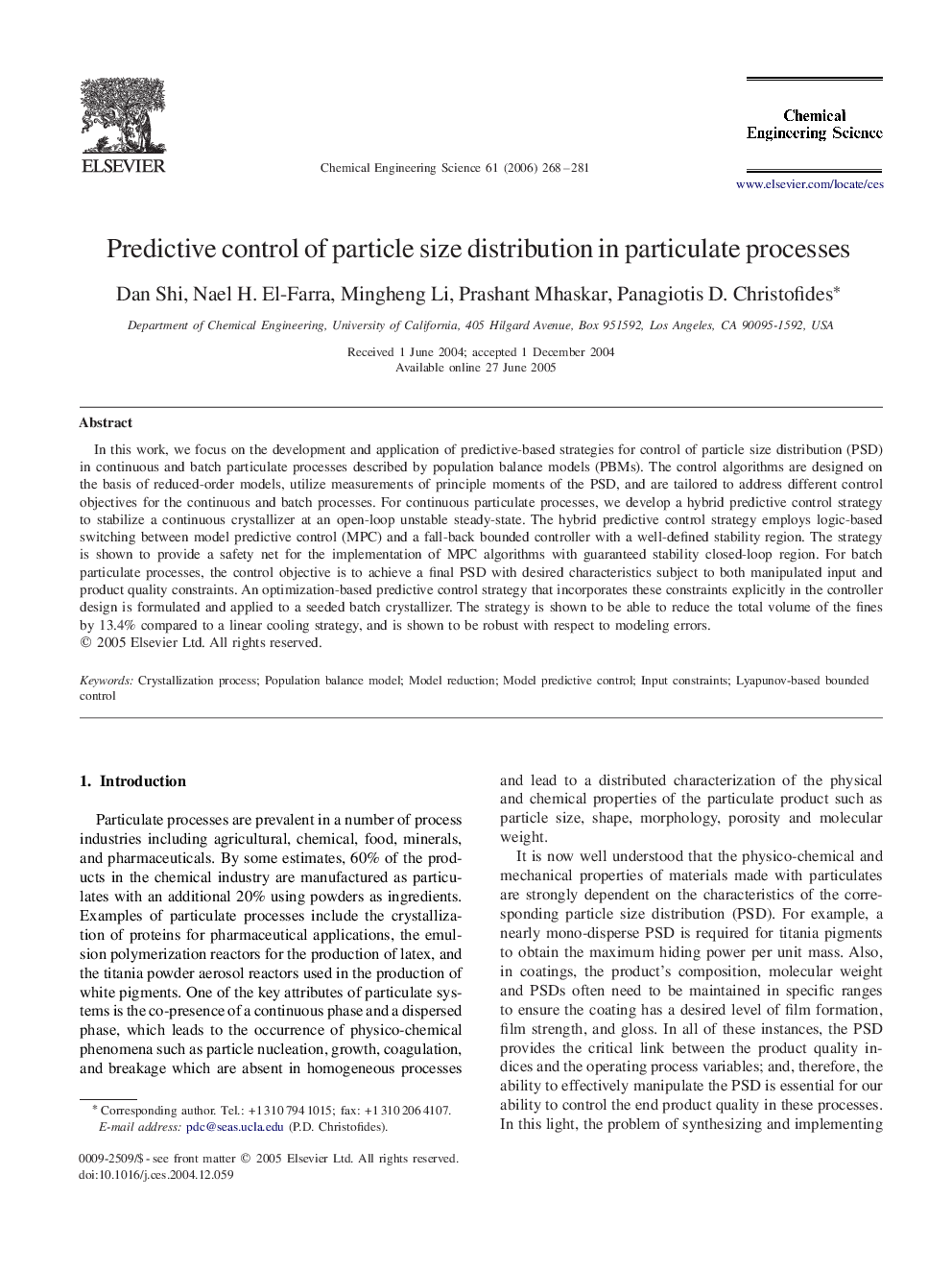| Article ID | Journal | Published Year | Pages | File Type |
|---|---|---|---|---|
| 10262688 | Chemical Engineering Science | 2006 | 14 Pages |
Abstract
In this work, we focus on the development and application of predictive-based strategies for control of particle size distribution (PSD) in continuous and batch particulate processes described by population balance models (PBMs). The control algorithms are designed on the basis of reduced-order models, utilize measurements of principle moments of the PSD, and are tailored to address different control objectives for the continuous and batch processes. For continuous particulate processes, we develop a hybrid predictive control strategy to stabilize a continuous crystallizer at an open-loop unstable steady-state. The hybrid predictive control strategy employs logic-based switching between model predictive control (MPC) and a fall-back bounded controller with a well-defined stability region. The strategy is shown to provide a safety net for the implementation of MPC algorithms with guaranteed stability closed-loop region. For batch particulate processes, the control objective is to achieve a final PSD with desired characteristics subject to both manipulated input and product quality constraints. An optimization-based predictive control strategy that incorporates these constraints explicitly in the controller design is formulated and applied to a seeded batch crystallizer. The strategy is shown to be able to reduce the total volume of the fines by 13.4% compared to a linear cooling strategy, and is shown to be robust with respect to modeling errors.
Keywords
Related Topics
Physical Sciences and Engineering
Chemical Engineering
Chemical Engineering (General)
Authors
Dan Shi, Nael H. El-Farra, Mingheng Li, Prashant Mhaskar, Panagiotis D. Christofides,
